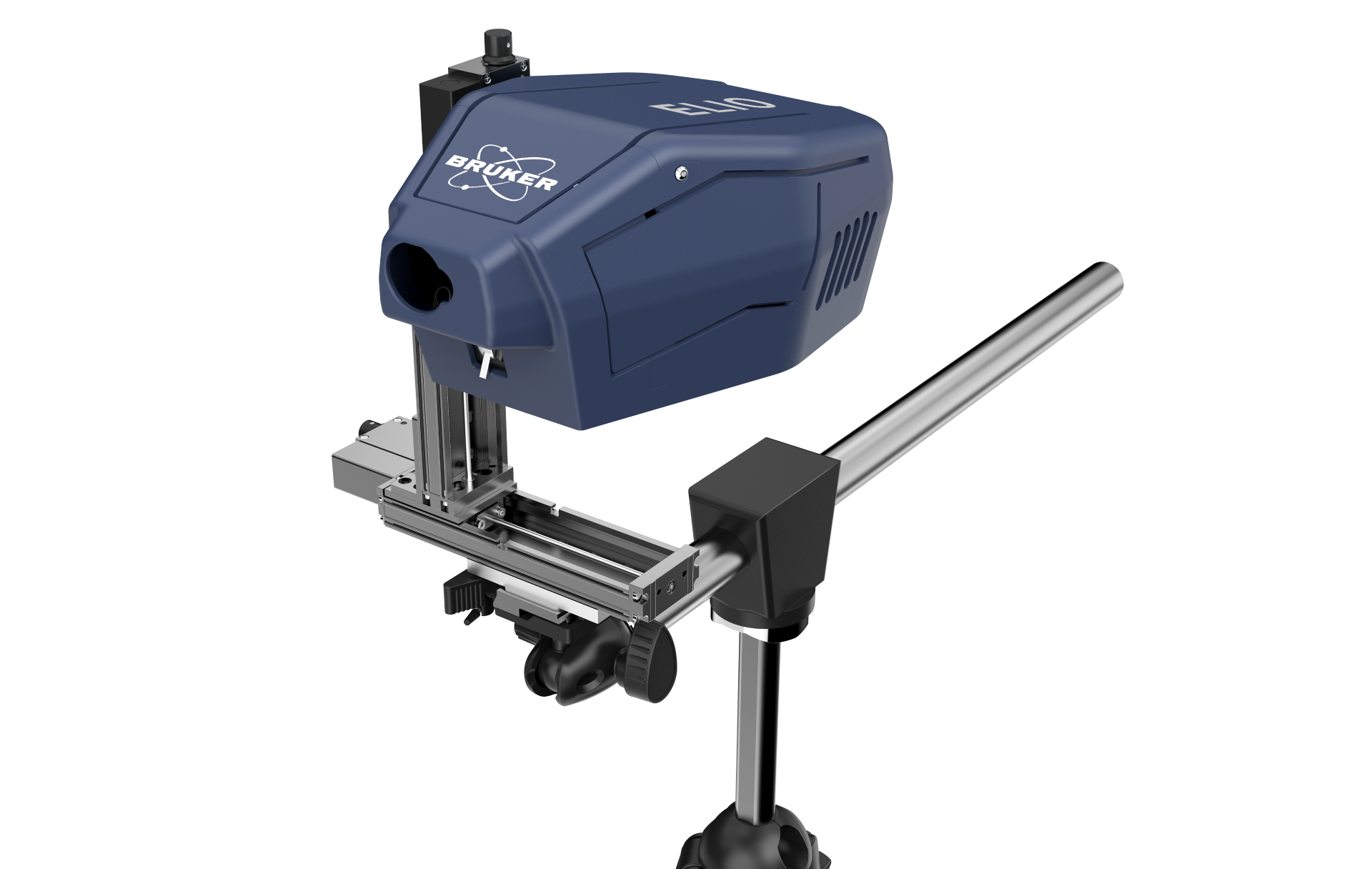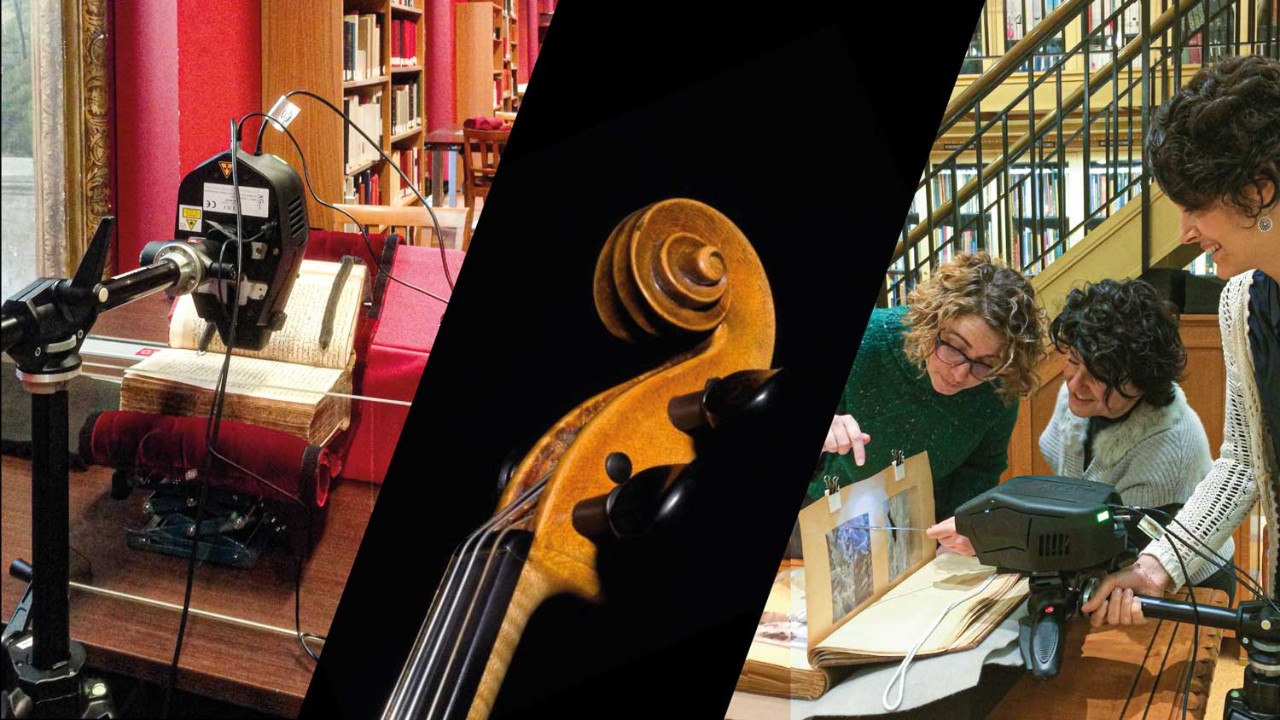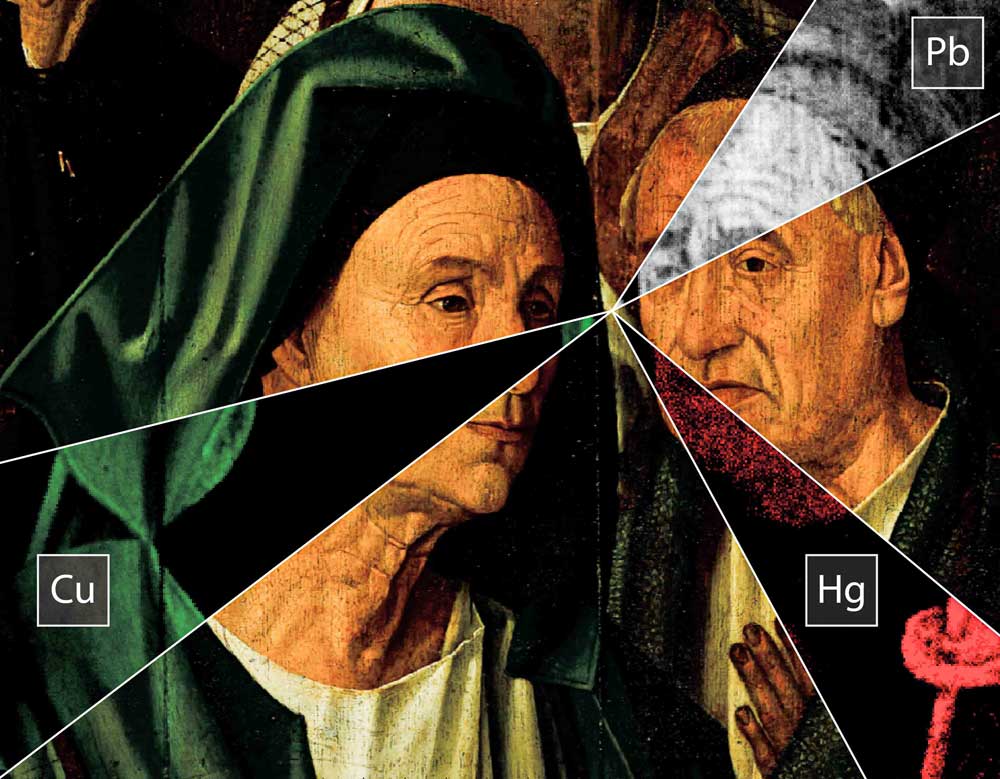ELIO
The Only Portable XRF Scanner on the Market
High Quality Spectrum for Qualitative Analysis


Portable Micro-XRF Spectrometer with Mapping Option
Key facts
- truly portable and flexible
- non-contact measurement
- non-invasive and non-destructive
- no sample preparation required
- laser guidance and microscope camera for precise measurement position control
- overlay of elemental distribution and optical images
- reliable trace element detection
The Bruker ELIO is easy to operate and reveals the crucial secrets of the object you aim at. High value objects are safe with the Bruker ELIO. The non-contact measurement is non-invasive and completely non-destructive. No sample preparation is required.
The light weight of the measurement head and the tripod make this system the only truly portable X-ray fluorescence (pXRF) spectrometer with mapping capabilities on the market and the perfect travel companion.
The alignment lasers identify the measurement point easily and ensure the correct and safe distance between sample and measurement head. High resolution optical images are recorded with an internal camera for each data point in addition to the XRF data.
The Bruker ELIO offers superior spectral quality with extremely low background which allows reliable qualitative trace element detection. The instrument can also be equipped with a He purging system to further extend the range of detectable elements as far as Na (Z = 11) to U (Z = 92). The Bruker ELIO micro-XRF spectrometer detects trace elements reliably thanks to the superior design of the electronics. The spectrometer can be equipped with several X-ray filters to optimize the excitation conditions for specific applications.
A spectrum or a map can be recorded with the ELIO software. The automatic peak ID provides a quick visual indication of elements in a sample. The interface shows the spectrum and the element concentration while the acquisition is running. Data interpretation is easy with the overlay of the optical images and the XRF data.
The powerful data processing software ESPRIT Reveal offers many options for the offline analysis.
Why is the Bruker ELIO important
"What is the composition of the paint? Is the paint typical for the artist or the time he lived in? Is there another layer of paint hidden below the surface?”
These questions are in the spotlight when it comes to art and conservation, as well as authentication. But the principle is not limited to paintings. It's a key technology when it comes to the investigation of the origin of manufacturing of all types of artwork.
For the analysis of the local distribution of elements you can avoid the transportation of valuable artwork such as paintings or historic artefacts to laboratory. If the object is too heavy or too large transportation might not be feasible as is the case for rock paintings and cave paintings. The Bruker ELIO is the only truly portable XRF (pxrf) scanner. This open beam system analyses samples complete non-destructively on site.
The Bruker ELIO can be used for point measurements or with the mapping option to retrieve the distribution of multiple elements at the same time on areas as large as 100 mm by 100 mm. Recording the XRF spectrum on an area this large is also termed macro-XRF or MA-XRF.
Technical details
Excitation and filter option
|
| Analysis range |
|
Detection |
| Scanning |
|
Collimation
|
| Dimensions and weight |
|
Resources & Publications
Publications
- 2020 - Journal of Cultural Heritage: Pigments and glassy matrix of the 17th–18th century enamelled French watches: A non-invasive on-site Raman and pXRF study
- 2020 - Microchemical Journal: Chemistry of modern paint media: The strained and collapsed painting by Alexis Harding
- 2019 - Archaeological and Anthropological Sciences: First in situ pXRF analyses of rock paintings in Erongo, Namibia: results, current limits, and prospects
- 2019 - Mesoamerican Manuscripts: New Scientific Approaches and Interpretations: he Early Americas: History and Culture
- 2019 - Spectrochimica Acta Part A: Molecular and Biomolecular Spectroscopy: In-situ technical study of modern paintings part 1: The evolution of artistic materials and painting techniques in ten paintings from 1889 to 1940 by Alessandro Milesi (1856–1945)
- 2019 - Journal of Anthropological Archaeology: Social and technological changes in the ceramic production of the Northern Levant during the LBA/IA transition: New evidence about the Sea People issue through archaeometry
- 2018 - Heritage Science (Open Access): Multianalytical approach for the analysis of the Codices Millenarius Maior and Millenarius Minor in Kremsmuenster Abbey, Upper Austria
- 2016 - Heritage Science (Open Access): Disclosing Jackson Pollock’s palette in Alchemy (1947) by non-invasive spectroscopies
- 2016 - Meteoritics & Planetary Science (Open Access): The meteoritic origin of Tutankhamun's iron dagger blade
- 2016 - Heritage Science (Open Access): Investigation of an enameled glass mosque lamp: a 13th–14th-century Mamluk example or 19th-century European version?





